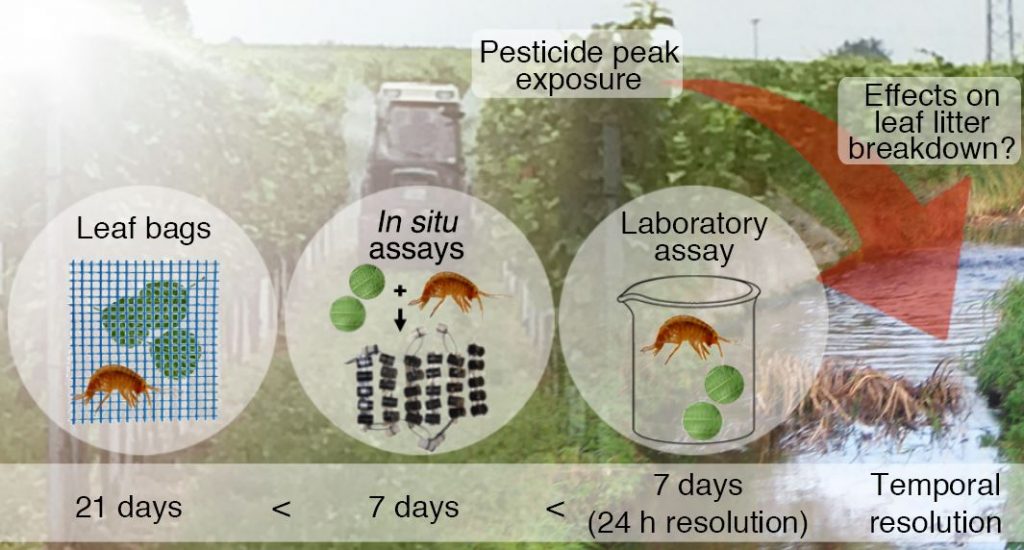In this post, we talk about our recently published paper “Transient effects following peak exposures towards pesticides – an explanation for the unresponsiveness of in situ measured functional variables”.
It is becoming increasingly popular to use functional variables as a measure for stressors’ implications in ecosystem integrity. Invertebrate-mediated leaf litter decomposition is frequently used in this context. However, the involved organisms might show recovery or compensatory mechanisms such as increased leaf consumption following a pulsed stress event. In consequence, in situ measures such as the mass loss from leaf bags or the feeding of caged invertebrates deployed for days or even weeks may fail to detect transient effects.
We tested the relevance of such transient effects using a 6-hour peak exposure towards field-relevant insecticide (i.e., etofenprox) concentrations as a model scenario at three levels of complexity. The first two levels were assessed as part of a larger mesocosm study, which was recently presented here: these were the assessment of the decomposition realised by complex invertebrate communities in the stream mesocosms over 21 days, and 7-day in situ bioassays quantifying the leaf consumption of the amphipod shredder Gammarus fossarum. In a final step, a laboratory experiment was conducted determining the daily feeding rate of the same species over seven days by providing the animals with fresh leaf material on a daily basis. This approach allowed to identify potential post-exposure recovery and compensation.
The peak exposure towards etofenprox did not trigger a significantly altered decomposition by invertebrate communities during the leaf bag assay, while in situ bioassays detected a significant reduction in gammarids’ feeding rate at the highest tested concentration. The laboratory bioassay suggests that the observed mismatches might indeed be explained by gammarids’ recovery as well as post-exposure compensation by an increased leaf consumption. However, until animals have fully recovered and the lower energy uptake and damages caused by insecticide peak exposures are completely compensated for, shredders can be assumed to be in a state of increased sensitivity towards additional stress. We thus argue that biomonitoring for implications of peak exposures and other pulsed stress events must happen at an adequate temporal resolution.
The paper was authored by Jochen Zubrod, Rebecca Bundschuh, Dominic Englert, Markus Rohrberg, Matthias Wieczorek, Nikita Bakanov, Ralf Schulz, and Mirco Bundschuh and published in Environmental Pollution.
You may also be interested in:

